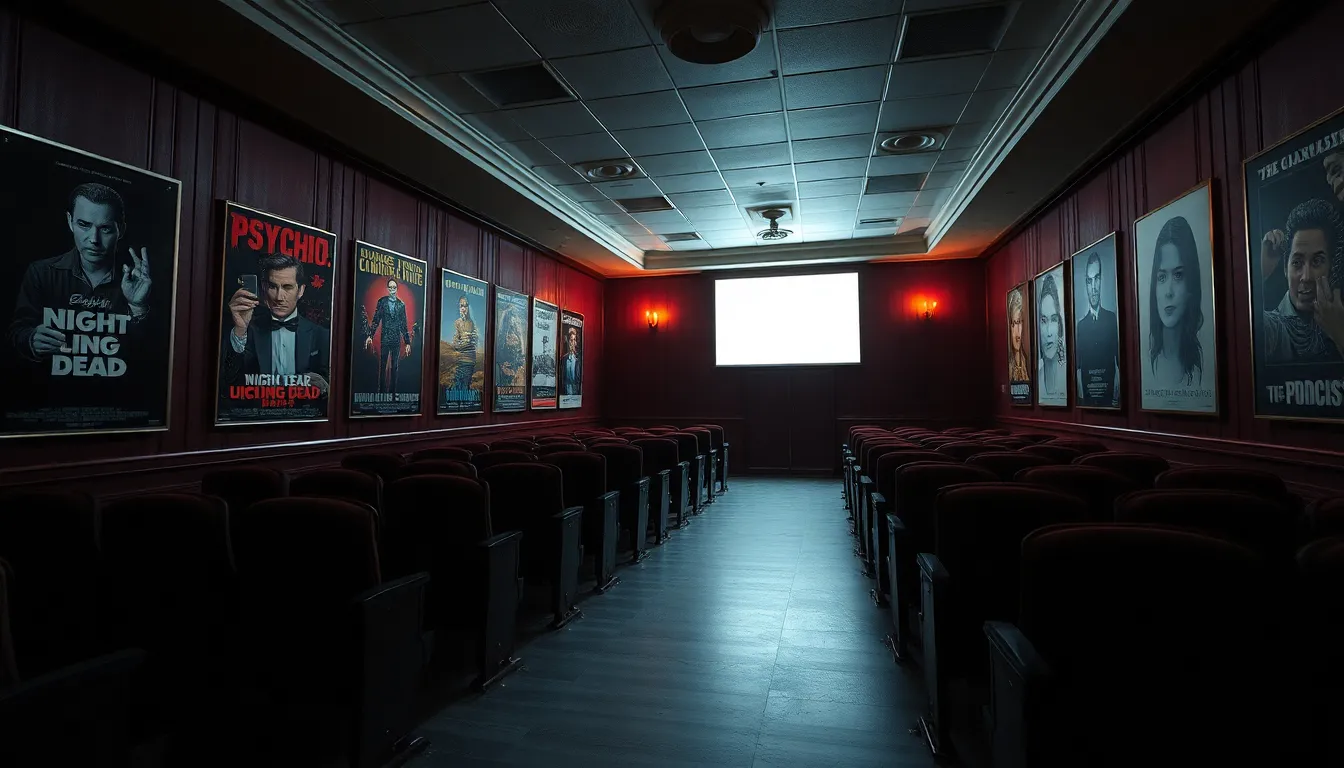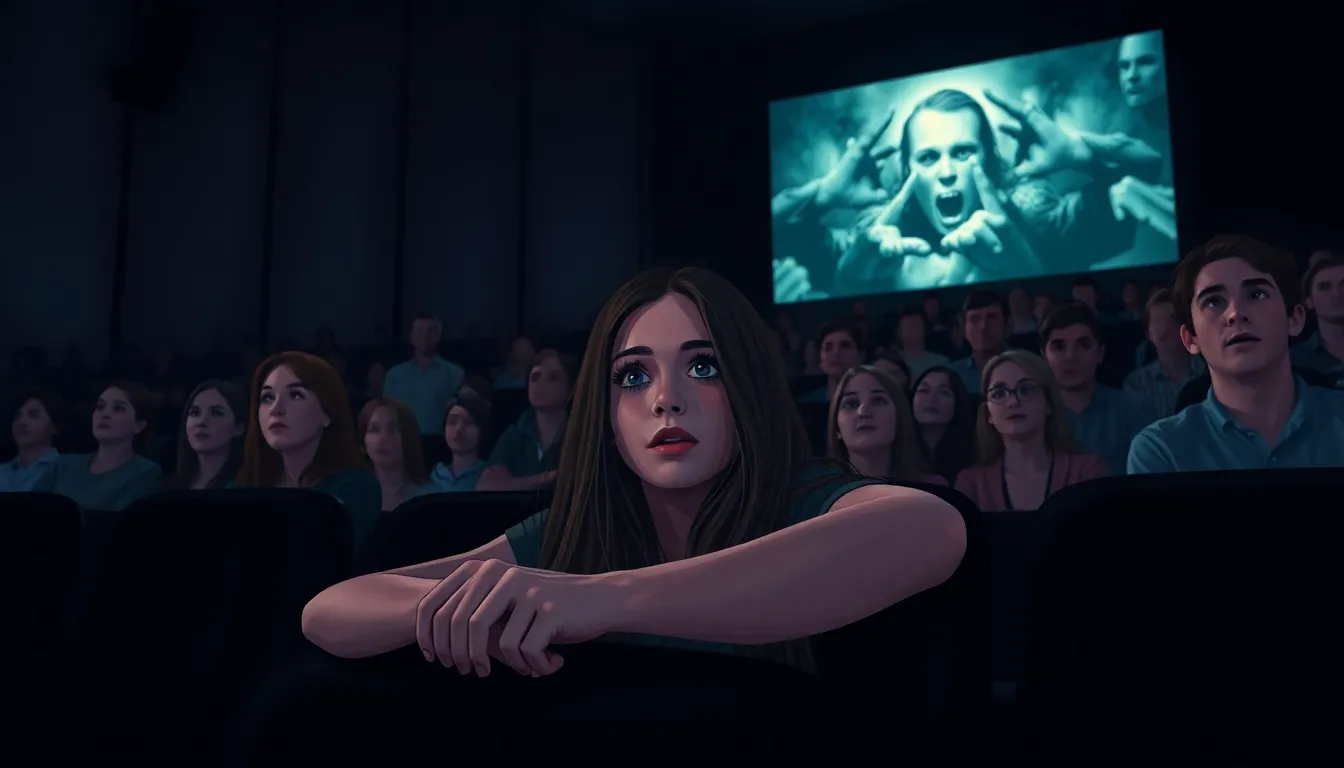When the lights dim and the eerie music begins, horror movies have a unique way of grabbing attention and keeping it—much like a cat with a laser pointer. Whether it’s the spine-tingling suspense or the thrill of a good scare, these films offer an escape from reality that can be both exhilarating and terrifying.
Really Good Horror Movies
Engaging horror movies possess several essential elements that captivate audiences. These components enhance the movie’s ability to terrify while offering a unique viewing experience.
Unique Storytelling Techniques
Compelling horror films often embrace unconventional narratives. These movies utilize varied perspectives and time shifts to create tension. Incorporating unreliable narrators adds an element of surprise, leaving viewers guessing. Additionally, nonlinear storytelling keeps the audience on edge, making predicted outcomes difficult. Effective use of symbolism often elevates these stories, imparting deeper meanings that resonate long after the credits roll.
Character Development and Archetypes
Memorable characters play a significant role in successful horror films. Strong character arcs help viewers connect emotionally, increasing investment in their fates. Archetypes, like the final girl or the monster, serve as familiar touchstones, allowing audiences to identify and anticipate roles. Adding depth to these characters, such as backstories or personal struggles, creates empathy and heightens the emotional impact of their perilous situations. Layered character development results in believable responses, which enhance the horror experience.
Classic Really Good Horror Movies

Classic horror movies shaped the genre, setting standards for storytelling and visual impact. Their ability to entice audiences remains unmatched.
Influential Films from the 20th Century
Films like Psycho (1960), Night of the Living Dead (1968), and The Exorcist (1973) transformed horror cinema. Psycho introduced psychological terror, pioneering the use of unexpected twists. Night of the Living Dead redefined the zombie genre, creating a cultural phenomenon. The Exorcist set a benchmark for supernatural horror with its unsettling themes and groundbreaking special effects.
Iconic Directors and Their Contributions
Directors like Alfred Hitchcock and George A. Romero significantly influenced horror films. Hitchcock excelled at building suspense, evident in his masterpiece Psycho. Romero revolutionized the zombie genre with Night of the Living Dead, instilling social commentary within horror narratives. John Carpenter’s Halloween redefined slasher films through its innovative use of tension and score, leaving a lasting impact on the genre.
Modern Really Good Horror Movies
Modern horror films showcase innovative storytelling and remarkable craftsmanship. The genre continually evolves, reflecting societal fears and cultural shifts.
Noteworthy Releases of the Last Decade
Notable films such as Get Out (2017) and Hereditary (2018) push boundaries. Midsommar (2019) draws viewers into a disturbing daylight horror. A Quiet Place (2018) utilizes silence for suspense, creating a unique atmosphere. The Invisible Man (2020) refreshes a classic narrative with contemporary themes on abuse. These films redefine horror while captivating audiences worldwide.
Emerging Filmmakers to Watch
Emerging talents stand out in modern horror, reshaping narratives with fresh perspectives. Mike Flanagan, known for The Haunting of Hill House (2018) and Midnight Mass (2021), masterfully blends psychological terror with deep character exploration. Nia DaCosta, director of Candyman (2021), echoes societal issues, invoking classic horror with a modern twist. Ari Aster’s distinct style in Midsommar offers thought-provoking experiences. These filmmakers inspire the genre’s future with unique visions and compelling stories.
Genre Subcategories of Really Good Horror Movies
Horror movies encompass various subgenres, each offering a distinct experience. The following two subcategories stand out for their ability to evoke fear and provoke thought.
Psychological Horror
Psychological horror dives deep into the human psyche, exploring themes of madness, anxiety, and existential dread. This subgenre often blurs the lines between reality and imagination, leaving viewers questioning what is real. Films like Black Swan and The Babadook exemplify this tension, focusing on characters’ internal struggles. Characters often become unreliable narrators, amplifying the sense of paranoia. Through a combination of suspenseful storytelling and atmospheric tension, psychological horror keeps audiences on edge, igniting fears rooted in human nature.
Supernatural Horror
Supernatural horror explores fear stemming from unnatural entities or phenomena beyond human control. This subgenre often includes ghosts, demons, and mythical beings, evoking a sense of dread through the unknown. Movies such as The Conjuring and Hereditary showcase how supernatural elements enhance the horror experience. These films create tension by combining folklore and contemporary fears, making the supernatural relatable to modern audiences. By utilizing shocking imagery and compelling narratives, supernatural horror captivates viewers, leaving a lasting impression of fear and intrigue.
Conclusion
Horror movies continue to captivate audiences with their unique ability to blend fear and fascination. The genre’s evolution showcases the creativity and innovation of filmmakers who push boundaries and explore deep-seated fears. From classic masterpieces to modern gems each film offers a distinct experience that resonates with viewers on multiple levels.
As new voices emerge and storytelling techniques evolve the future of horror looks bright. Whether through psychological tension or supernatural thrills horror films will always hold a special place in cinema. They invite viewers to confront their fears while providing an exhilarating escape from reality.

